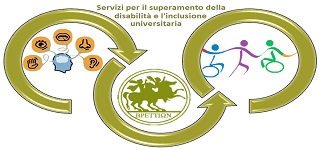Pubblicazione:
30/07/2020
Ultimo aggiornamento: 2020-07-30 12:35:55
Obesity and Insulin Resistance, What is the Link?
Excess fat in the body (obesity) is a serious threat to the health of more than one third of the world’s population. Excessive fat accumulation is associated with a greater risk for major health problems, including; diabetes, cardiovascular disease, certain cancers, and other illnesses. Resistance to the hormone insulin is a major feature of obesity. Results of a new international study revealing the molecular link between obesity and insulin resistance may open new paths for treatments and cures.
July 29, 2020:
Insulin resistance is recognized as a complex pathological state in which the biological responses to the hormone insulin are less than normal in several body organs and tissues. Fat in internal organs is termed visceral adipose tissue (VAT). Prior studies have shown that in obesity, excess VAT is the major culprit for insulin resistance. To date, research investigating the mechanistic connections between excess VAT and insulin resistance has been difficult to understand, and scientists have not yet reached a consensus on the mechanism of obesity-related insulin resistance. An international study published in The Lancet’s EBioMedicine on July 29, 2020 now provides an interesting clue as to the molecular link between obesity and insulin resistance.
About the results
A team of researchers from Italy (University “Magna Græcia”, Catanzaro), Germany (Charité-Universitätsmedizin, Berlin) and the USA (University of California, San Francisco), coordinated by Prof. Antonio Brunetti, Chief of Endocrinology at University “Magna Græcia”, observed that, in obese individuals, excess VAT expresses very low levels of the insulin receptor (IR), the cell-bound mediator of insulin action.
Prof. Brunetti states: “Reduction of IR expression in human VAT is an early molecular event that is inversely related to the degree of obesity”. Insulin resistance worsens with greater enlargements of VAT. Under these circumstances, fat cells experience a defect in oxygenation (hypoxia). Brunetti et al. now report that hypoxia triggers the abnormal production of the novel small RNA fragment named, miR-128, leading to reduced IR expression.
Prof. Brunetti cautioned. “Although our results have been validated in experimental animal models and cell culture systems, there are questions however that still need to be answered. We can’t say whether miR-128-based therapies will be positive or not, but this discovery should now be pursued in an effort to expand the treatment opportunities for obesity-related insulin resistance”.
Thus, the identification of miR-128, as a key molecular player in VAT dysfunction by Brunetti et al., may provide a novel target for the mediation of obesity-related insulin resistance and its associated metabolic diseases.
Indice di pagina
Chi sei? Naviga il sito per profilo

















